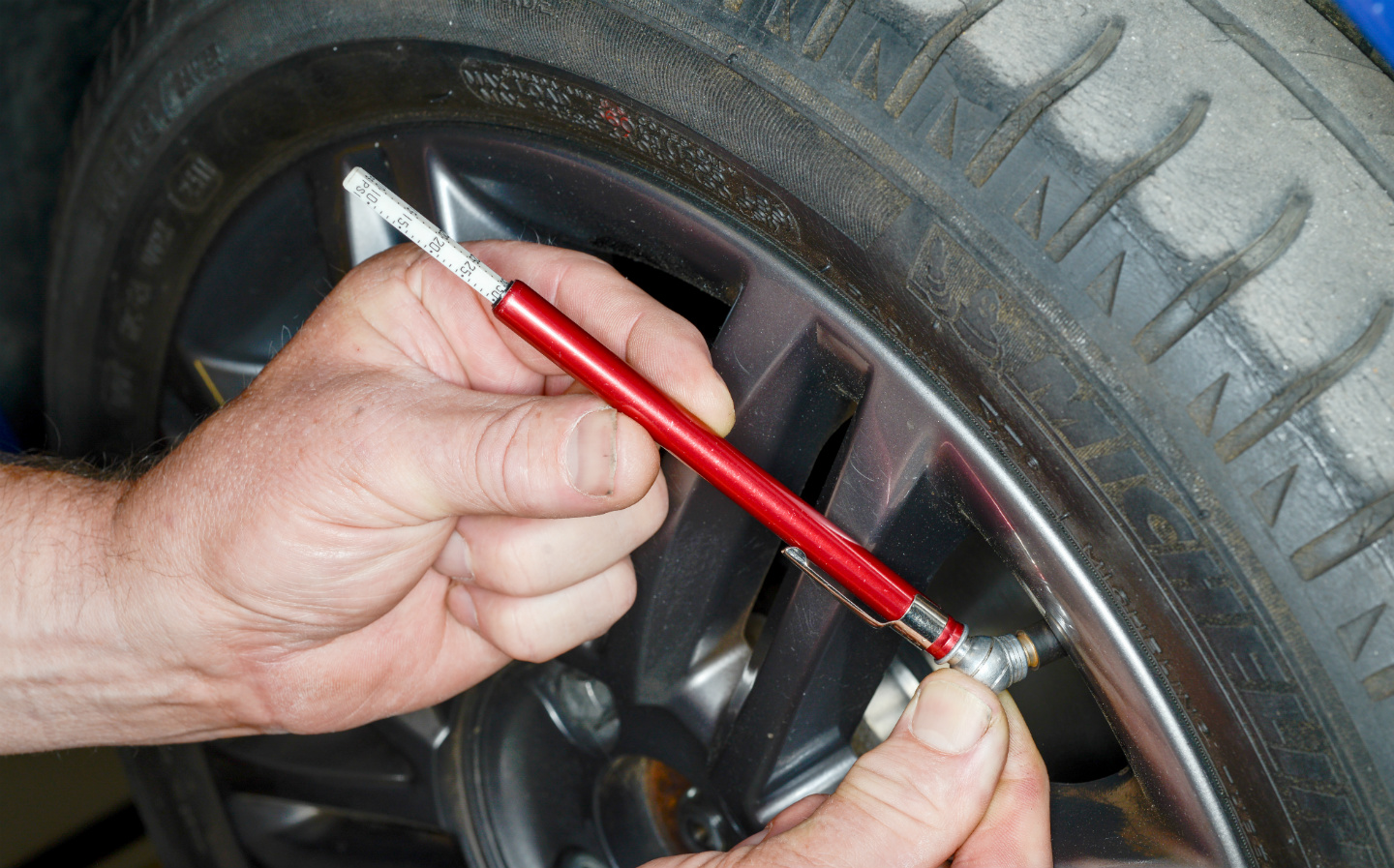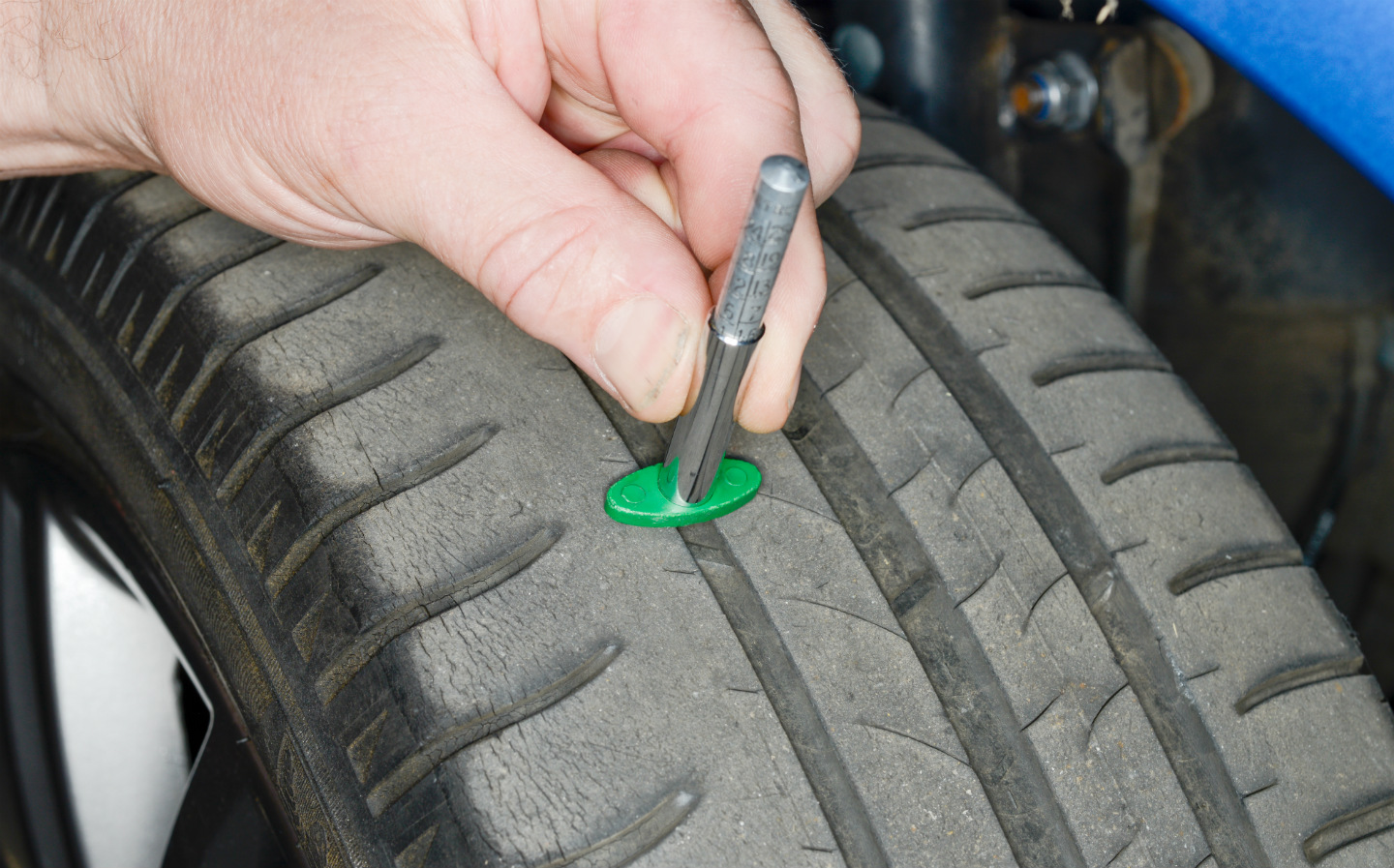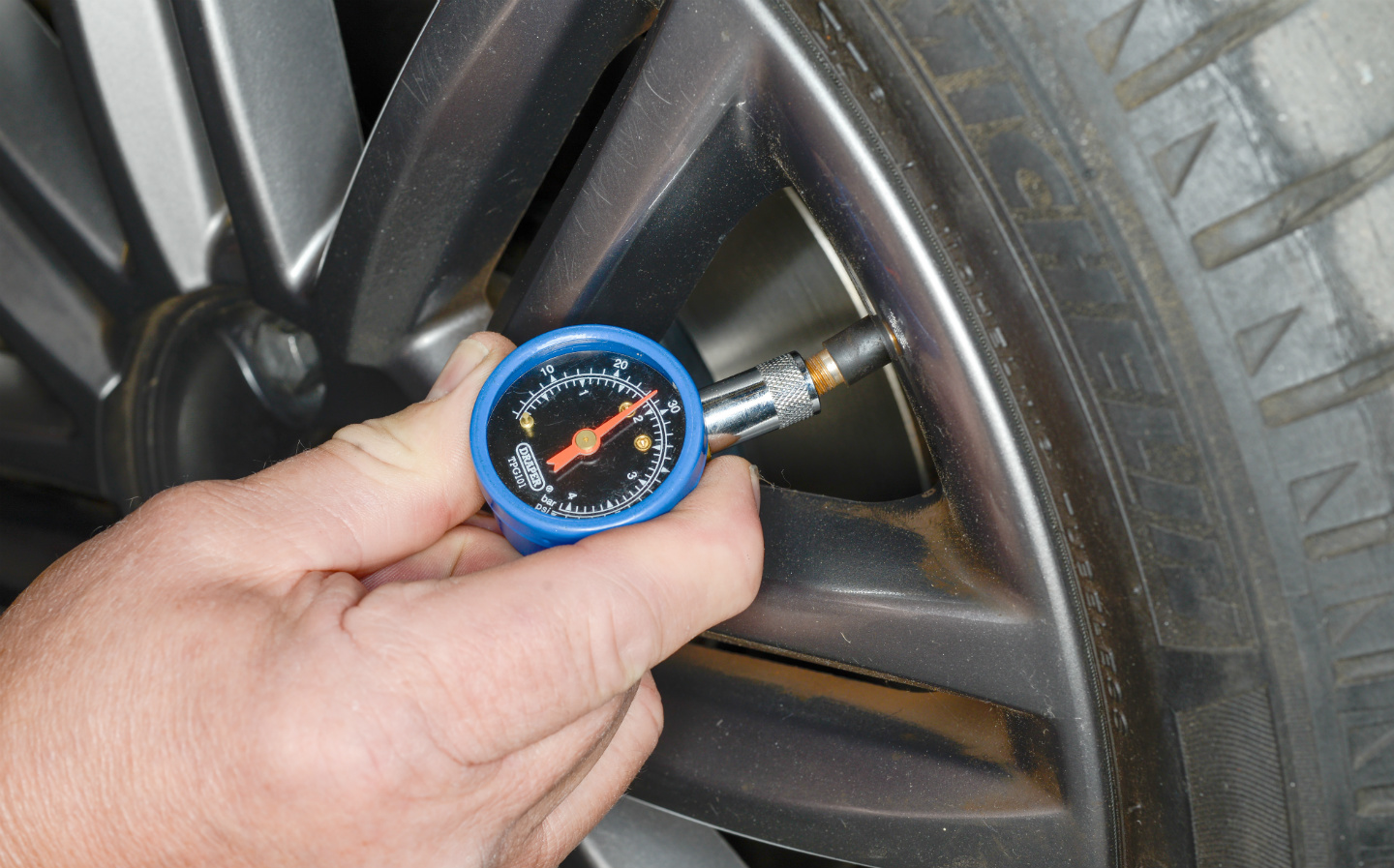How to check car tyre pressure and put air in them
Pump it up
Sections
- Checking and inflating car tyres
- How to find the correct air pressure
- How to check tyre pressure
- How to check tyre tread
Checking and inflating car tyres
Tyres are arguably a car’s most important safety feature. They have a big influence on how well a car holds the road, responds to the steering and slows when you apply the brakes.
Drive with tyres that are flat or as bald as Bruce Willis’s head and there is a higher chance that your car will crash.
As if that weren’t incentive enough, drivers can be given three penalty points and fined up to £10,000 for using tyres below the legal minimum tread depth, of 1.6mm across three quarters of the width of the tyre. The fine is up to £2,500, but it is applied per tyre. Same story with penalty points – it can be three points son your licence per illegal tyre.
That’s why it’s important that drivers regularly check the condition of their car’s tyres. Just a few minutes spent inspecting them can help keep you and other road users safe and also ensure that your car feels its best to drive.
And at a time when the price of fuel is rising, tyres that are under-inflated will cause a car to use more fuel, as there’s greater drag on the road surface. Michelin says a drop of 15 PSI (1 bar) will mean a 6% increase in the amount of fuel your car uses.
Tyre manufacturers and road safety organisations recommend drivers perform checks of vehicle tyres at least once a month. Here’s how to inspect yours.
How to find the correct air pressure of car tyres

Check the tyre size of your vehicle
With a few exceptions, such as high performance models, a car’s four tyres should be of the same size. Take a look at the side wall of one of the tyres, and look for a sequence of numbers and letters, which gives the size of the tyre. An example is: 195/55 R 16. Make a note of this.
Finding the recommended air pressure
The vehicle handbook, or user manual, will detail the correct air pressures to be used in your car’s size tyres. Additionally, some cars have a sticker, which is normally either situated on the driver’s door frame or inside the door of the fuel filler, which will list the recommended air pressures for the vehicle’s tyres.
Increase air pressure for heavy loads or when towing
Remember, if you are driving the car with a full complement of luggage and people, or intend to carry heavy loads or tow, tyres will need to be inflated to a higher air pressure than they would during normal driving conditions. The car’s handbook or sticker will provide the correct setting.
How to check tyre pressure
- Most petrol stations and garages will have an air compressor. Alternatively, buy a portable version, online or from a car spares store.
- It is recommended that you check tyres when they are cold, to avoid an incorrect reading, so either shortly after you started driving, or some time after stopping the car, such as after filling it with fuel.
- Remove the dust cap from the tyre valve.
- Push the tyre pressure gauge onto the end of the valve and check the reading on the analogue or digital display.
- If the air pressure is below the recommended setting, add more air until reaching the correct pressure. If it is above the setting, remove the appropriate amount of air.
- Repeat the process for the remaining tyres. And if your car has a spare wheel fitted, remember to check that too.
- Replace the tyre valve dust caps.
How to check tyre tread

At the same time as checking the air pressure of your car’s tyres, take a couple of minutes to perform a visual inspection and check the tread depth of the tyres.
- Park the vehicle on a level, stable surface, switch off the engine, ensure the handbrake is applied and transmission left in first gear (or ‘Park’ if an automatic).
- Check the condition of the sidewalls of the tyres. Look for cuts or tears in the rubber and egg-shaped bulges in the wall. These indicate serious damage and should be inspected by a tyre retailer, as the tyre will likely need replacing.
- Examine the wheels for signs of serious damage caused by potholes or hitting a kerb. Wheels can suffer fractures and fail, so don’t ignore serious damage.
- Check that the wheel weights are present. These can be knocked off, or may have slipped off when driving at speed. Without its balancing weights, a wheel will likely cause an unpleasant vibration to be felt through the steering or through the car’s structure. Having new weights fitted and the wheels balanced is inexpensive.
- Ensure the tyre tread depth is above the legal minimum of 1.6mm across three quarters of the width of the tyre.
- Tyres have tread wear indicators, which are small blocks of rubber positioned in the grooves or channels of the tread. These are at 1.6mm, so if the tread wears down to these, replace the tyre as soon as possible.
- Alternatively, invest in an inexpensive tyre tread depth indicator. These cost from as little as £1.
- Check the condition of the tyre tread. Look for nails, stones or other debris that may have pierced the rubber.
- Remove any nails or stones embedded in the tread before they penetrate the tyre and cause deflation. If removal of a nail does reveal that the tyre has been punctured, refit the nail so that its point of penetration is marked.
- Immediately change the wheel, and have the tyre repaired or replaced by a tyre dealer.
Tweet to @ST_Driving Follow @ST_Driving
- After reading this article about how to check car tyre pressure and put air in them, you might be interested in five of the best winter tyres for 2021
- You might also be interested in Black Friday tyre deals: what discounts to expect this winter
- We’ve also looked at how to claim for pothole damage to your car’s suspension, wheels and tyres





